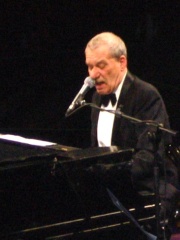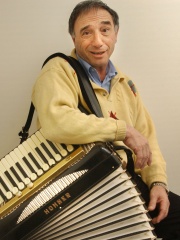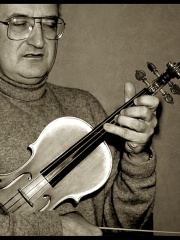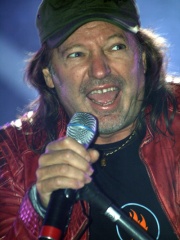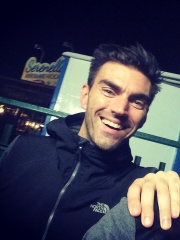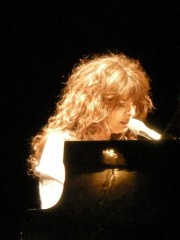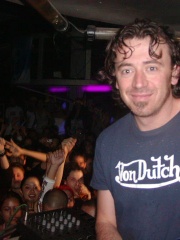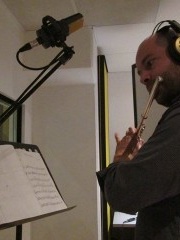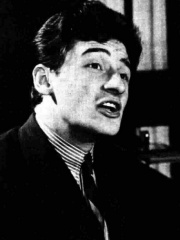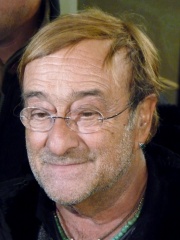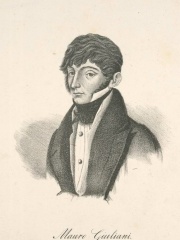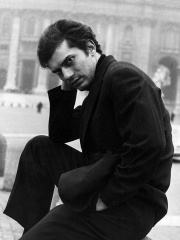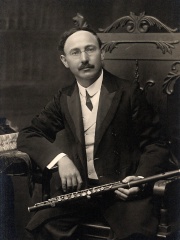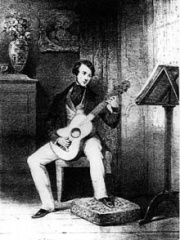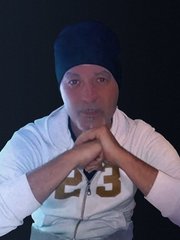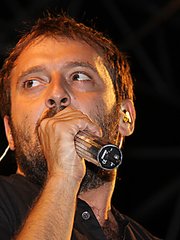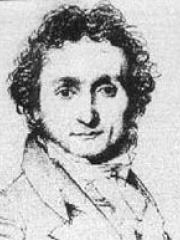
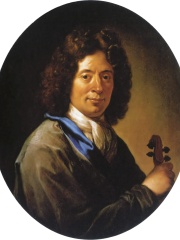
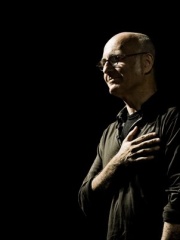
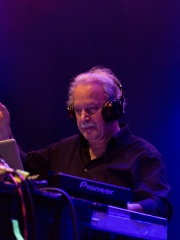
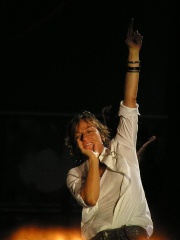

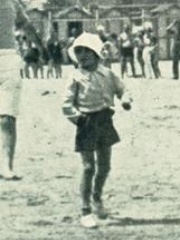
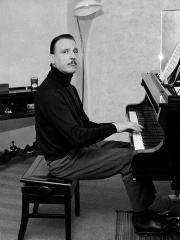
The Most Famous
MUSICIANS from Italy
Top 10
The following people are considered by Pantheon to be the top 10 most legendary Italian Musicians of all time. This list of famous Italian Musicians is sorted by HPI (Historical Popularity Index), a metric that aggregates information on a biography's online popularity. Visit the rankings page to view the entire list of Italian Musicians.

1. Niccolò Paganini (1782 - 1840)
With an HPI of 84.38, Niccolò Paganini is the most famous Italian Musician. His biography has been translated into 88 different languages on wikipedia.
Niccolò (or Nicolò) Paganini (; Italian: [ni(k)koˈlɔ ppaɡaˈniːni] ; 27 October 1782 – 27 May 1840) was an Italian violinist and composer. He was the most celebrated violin virtuoso of his time, and left his mark as one of the pillars of modern violin technique. His 24 Caprices for Solo Violin Op. 1 are among the best known of his compositions and have served as an inspiration for many prominent composers. Son of a ship chandler from Genoa, Paganini showed great gifts for music from an early age and studied under Alessandro Rolla, Ferdinando Paer and Gasparo Ghiretti. Accompanied by his father, he toured northern Italy extensively as a teenager. By 1805 he had come into the service of Napoleon's sister, Elisa Bonaparte, who then ruled Lucca where Paganini was first violin. From 1809 on he returned to touring and achieved continental fame in the subsequent two and a half decades, developing a reputation for his technical brilliance and showmanship, as well as his extravagant, philandering lifestyle. Paganini ended his concert career in 1834 amid declining health, and the failure of his Paris casino left him in financial ruin. He retired to southern France and died in Nice in 1840 at the age of 57.

2. Arcangelo Corelli (1653 - 1713)
With an HPI of 78.49, Arcangelo Corelli is the 2nd most famous Italian Musician. His biography has been translated into 61 different languages.
Arcangelo Corelli (, also UK: , US: ; Italian: [arˈkandʒelo koˈrɛlli]; 17 February 1653 – 8 January 1713) was an Italian composer, musician, and violinist of the middle Baroque era. His music was key in the development of the modern genres of sonata and concerto, in establishing the preeminence of the violin, and as the first coalescing of modern tonality and functional harmony. He was trained in Bologna and Rome and spent most of his career there with the protection of wealthy patrons. Though his entire production is limited to just six published collections – five of which are trio sonatas or solo and one of concerti grossi — he achieved great fame and success throughout Europe, in the process crystallizing widely influential musical models. His writing was admired for its balance, refinement, sumptuous and original harmonies, for the richness of the textures, for the majestic effect of the theatricality and for its clear, expressive and melodious polyphony, a perfect quality of Classical ideals, although belonging to the Baroque era and often employing resources typical of this school, such as the exploration of dynamic and expressive contrasts, but always tempered by a great sense of moderation. He was the first to fully apply, with an expressive and structuring purpose, the new tonal system, consolidated after at least two hundred years of experimentation. As a virtuoso violinist he was considered one of the greatest of his generation and contributed, thanks to the development of modern playing techniques and to his many disciples scattered throughout Europe, to place the violin among the most prestigious solo instruments and was also a significant figure in the evolution of the traditional orchestra. A dominant figure in Roman musical life and internationally highly regarded, he was desired by many courts and was included in the most prestigious artistic and intellectual society of his time, the Pontifical Academy of Arcadia. He was known in his time as "the new Orpheus", "the prince of musicians" and other similar adjectives, great folklore was generated around his figure and his fame did not diminish after his death. Even today his work is the subject of a voluminous critical bibliography and his sonatas are still widely used in musical academies as didactic material as well as pieces capable of affirming themselves in today's concert repertoire. His position in the history of Western music is considered crucial, being recognized as one of the greatest masters at the turn of the 17th and 18th century, as well as one of the earliest and greatest classicists.

3. Ludovico Einaudi (b. 1955)
With an HPI of 73.11, Ludovico Einaudi is the 3rd most famous Italian Musician. His biography has been translated into 45 different languages.
Ludovico Maria Enrico Einaudi OMRI (Italian: [ludoˈviːko eiˈnaudi] ; born 23 November 1955) is an Italian pianist and composer. Trained at the Conservatorio Verdi in Milan, Einaudi began his career as a classical composer, later incorporating other styles and genres such as pop, rock, folk, and world music. Einaudi has composed the scores for a number of films and television productions, including This Is England, The Intouchables, I'm Still Here, the TV series Doctor Zhivago, and Acquario (1996), for which he won the Grolla d'oro. His music was used as the score for the Golden Globe and Academy Award-winning films Nomadland and The Father. He has also released a number of solo albums for piano and other instruments, notably I Giorni in 2001, Nightbook in 2009, and In a Time Lapse in 2013. On 1 March 2019, Einaudi announced a seven-part project named Seven Days Walking, which was released over the course of seven months in 2019. In 2005, he was appointed an Officer of the Order of Merit of the Italian Republic.

4. Giorgio Moroder (b. 1940)
With an HPI of 72.78, Giorgio Moroder is the 4th most famous Italian Musician. His biography has been translated into 46 different languages.
Giovanni Giorgio Moroder (Italian: [dʒoˈvanni ˈdʒordʒo moˈrɔːder], born 26 April 1940) is an Italian composer and record producer. Dubbed the "Father of Disco", Moroder is credited with pioneering Euro disco and electronic dance music. His work with synthesizers had a significant influence on several music genres such as hi-NRG, Italo disco, synth-pop, new wave, house, and techno music. While in Munich in the 1970s, Moroder started Oasis Records, later a subdivision of Casablanca Records. He is the founder of the former Musicland Studios in Munich, a recording studio used by many artists including the Rolling Stones, Electric Light Orchestra, Led Zeppelin, Deep Purple, Queen, and Elton John. He produced singles for Donna Summer during the mid-to-late 1970s disco era, including "Love to Love You Baby", "I Feel Love", "Last Dance", "MacArthur Park", "Hot Stuff", "Bad Girls", "Dim All the Lights", "No More Tears (Enough Is Enough)", and "On the Radio". During this period, he also released many albums, including the synthesizer-driven From Here to Eternity (1977) and E=MC2 (1979). He began to compose film soundtracks and scores, including Midnight Express, American Gigolo, Superman III, Scarface, The NeverEnding Story, and the 1984 restoration of Metropolis. Moroder's work on the film Midnight Express (1978), which contained the international hit "Chase", won him the Academy Award for Best Original Score and the Golden Globe Award for Best Original Score. He also produced a number of electronic disco songs for the Three Degrees and two albums for Sparks. In 1990, he composed "Un'estate italiana", the official theme song of the 1990 FIFA World Cup. Moroder has created songs for many performers including David Bowie, Falco, The Weeknd, Kylie Minogue, Irene Cara, Bonnie Tyler, Janet Jackson, Madleen Kane, Melissa Manchester, Blondie, Japan and France Joli. Moroder has stated that the work of which he is most proud is Berlin's "Take My Breath Away", which earned him the Academy Award for Best Original Song and the Golden Globe Award for Best Original Song after appearing in the film Top Gun in 1986; he had earned the same awards in 1983 for "Flashdance... What a Feeling" (as well as the Golden Globe Award for Best Original Score for all of his work on Flashdance). In addition to the three Academy Awards and four Golden Globes, Moroder has also received four Grammy Awards, two People's Choice Awards, and more than 100 Golden and Platinum discs. In 2004, he was inducted into the Dance Music Hall of Fame.
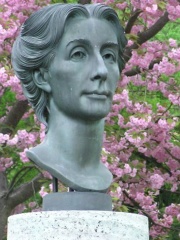
5. Cosima Wagner (1837 - 1930)
With an HPI of 72.28, Cosima Wagner is the 5th most famous Italian Musician. Her biography has been translated into 33 different languages.
Francesca Gaetana Cosima Wagner (née Liszt; 24 December 1837 – 1 April 1930) was the daughter of the Hungarian composer and pianist Franz Liszt and Franco-German romantic author Marie d'Agoult. She became the second wife of the German composer Richard Wagner, and with him founded the Bayreuth Festival as a showcase for his stage works. After his death she devoted the rest of her life to the promotion of his music and philosophy. Commentators have recognised Cosima as the principal inspiration for Wagner's later works, particularly Parsifal. In 1857, after a childhood largely spent under the care of her grandmother and with governesses, Cosima married the conductor Hans von Bülow. Although the marriage produced two children, it was largely a loveless union, and in 1863 Cosima began a relationship with Wagner, who was 24 years her senior. They married in 1870; after Wagner's death in 1883 she directed the Bayreuth Festival for more than 20 years, increasing its repertoire to form the Bayreuth canon of ten operas and establishing the festival as a major event in the world of musical theatre. During her directorship, Cosima opposed theatrical innovations and adhered closely to Wagner's original productions of his works, an approach continued by her successors long after her retirement in 1907. Under her influence, Bayreuth became increasingly identified with antisemitism. This was a defining aspect of Bayreuth for decades, into the Nazi era which closely followed her death there in 1930. Thus, although she is widely perceived as the saviour of the festival, her legacy remains controversial.

6. Gianna Nannini (b. 1954)
With an HPI of 70.05, Gianna Nannini is the 6th most famous Italian Musician. Her biography has been translated into 42 different languages.
Gianna Nannini (Italian pronunciation: [ˈdʒanna nanˈniːni]; born 14 June 1954) is an Italian singer and songwriter. Her most notable songs include "America" (1979), "Fotoromanza" (1984), "I maschi" (1987), "Meravigliosa creatura" (1995), "Sei nell'anima" (2006) and "Bello e impossibile" (1986). The latter became a hit across Europe, especially in Austria, Germany, Italy and Switzerland.

7. Giovanni Battista Viotti (1755 - 1824)
With an HPI of 69.33, Giovanni Battista Viotti is the 7th most famous Italian Musician. His biography has been translated into 34 different languages.
Giovanni Battista Viotti (12 May 1755 – 3 March 1824) was an Italian violinist whose virtuosity was famed and whose work as a composer featured a prominent violin and an appealing lyrical tunefulness. He was also a director of French and Italian opera companies in Paris and London. He personally knew Joseph Haydn and Ludwig van Beethoven.

8. Romano Mussolini (1927 - 2006)
With an HPI of 69.06, Romano Mussolini is the 8th most famous Italian Musician. His biography has been translated into 22 different languages.
Romano Bruno Mussolini (26 September 1927 – 3 February 2006) was an Italian jazz pianist, painter, and film producer. He was the fourth child and youngest son of Benito Mussolini.

9. Arturo Benedetti Michelangeli (1920 - 1995)
With an HPI of 68.74, Arturo Benedetti Michelangeli is the 9th most famous Italian Musician. His biography has been translated into 28 different languages.
Arturo Benedetti Michelangeli (Italian: [arˈtuːro beneˈdetti mikeˈlandʒeli]; 5 January 1920 – 12 June 1995) was an Italian classical pianist. He is considered one of the greatest pianists of the twentieth century. According to The New York Times, he was perhaps the most reclusive, enigmatic and obsessive among the handful of the world's legendary pianists.
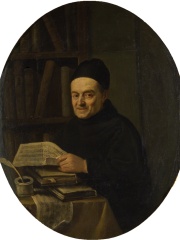
10. Giovanni Battista Martini (1706 - 1784)
With an HPI of 68.53, Giovanni Battista Martini is the 10th most famous Italian Musician. His biography has been translated into 29 different languages.
Giovanni Battista or Giambattista Martini, (24 April 1706 – 3 August 1784), also known as Padre Martini, was an Italian Conventual Franciscan friar, who was a leading musician, composer, and music historian of the period and a mentor to Mozart.
People
Pantheon has 67 people classified as Italian musicians born between 1523 and 2000. Of these 67, 32 (47.76%) of them are still alive today. The most famous living Italian musicians include Ludovico Einaudi, Giorgio Moroder, and Gianna Nannini. The most famous deceased Italian musicians include Niccolò Paganini, Arcangelo Corelli, and Cosima Wagner. As of April 2024, 3 new Italian musicians have been added to Pantheon including DJ Dado, Cesare Cremonini, and Ultimo.
Living Italian Musicians
Go to all RankingsLudovico Einaudi
1955 - Present
HPI: 73.11
Giorgio Moroder
1940 - Present
HPI: 72.78
Gianna Nannini
1954 - Present
HPI: 70.05
Paolo Conte
1937 - Present
HPI: 67.62
Rocco Granata
1938 - Present
HPI: 63.41
Salvatore Accardo
1941 - Present
HPI: 62.33
Vasco Rossi
1952 - Present
HPI: 60.54
Gabry Ponte
1973 - Present
HPI: 59.92
Alice
1954 - Present
HPI: 59.67
Benny Benassi
1967 - Present
HPI: 59.27
Marco Di Meco
1982 - Present
HPI: 59.06
Pino Donaggio
1941 - Present
HPI: 58.58
Deceased Italian Musicians
Go to all RankingsNiccolò Paganini
1782 - 1840
HPI: 84.38
Arcangelo Corelli
1653 - 1713
HPI: 78.49
Cosima Wagner
1837 - 1930
HPI: 72.28
Giovanni Battista Viotti
1755 - 1824
HPI: 69.33
Romano Mussolini
1927 - 2006
HPI: 69.06
Arturo Benedetti Michelangeli
1920 - 1995
HPI: 68.74
Giovanni Battista Martini
1706 - 1784
HPI: 68.53
Lucio Dalla
1943 - 2012
HPI: 68.09
Mauro Giuliani
1781 - 1829
HPI: 67.50
Luigi Tenco
1938 - 1967
HPI: 66.91
Leonardo De Lorenzo
1875 - 1962
HPI: 66.50
Matteo Carcassi
1792 - 1853
HPI: 65.30
Newly Added Italian Musicians (2025)
Go to all RankingsDJ Dado
1967 - Present
HPI: 46.96
Cesare Cremonini
1980 - Present
HPI: 43.34
Ultimo
1996 - Present
HPI: 40.00
Overlapping Lives
Which Musicians were alive at the same time? This visualization shows the lifespans of the 25 most globally memorable Musicians since 1700.

